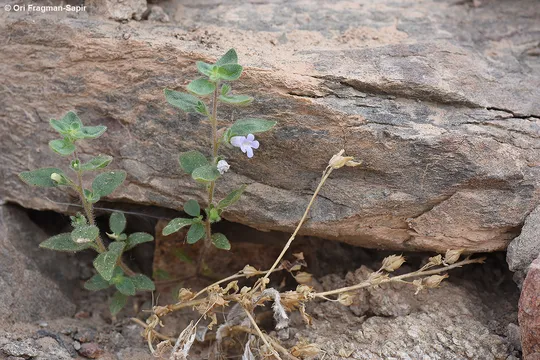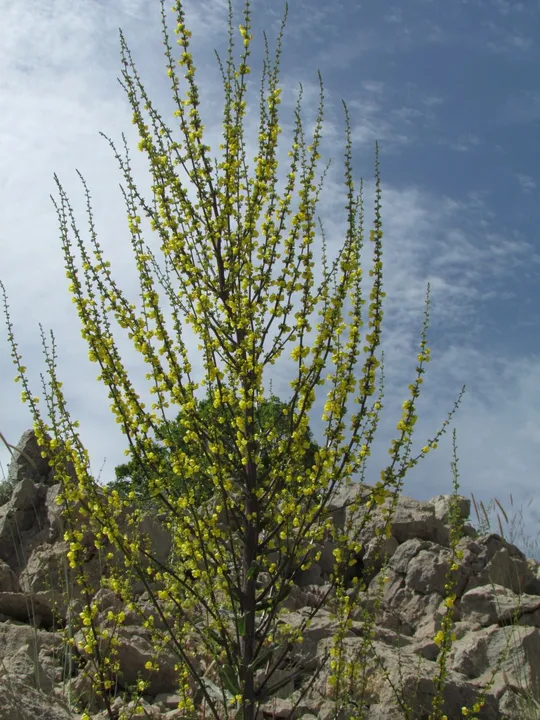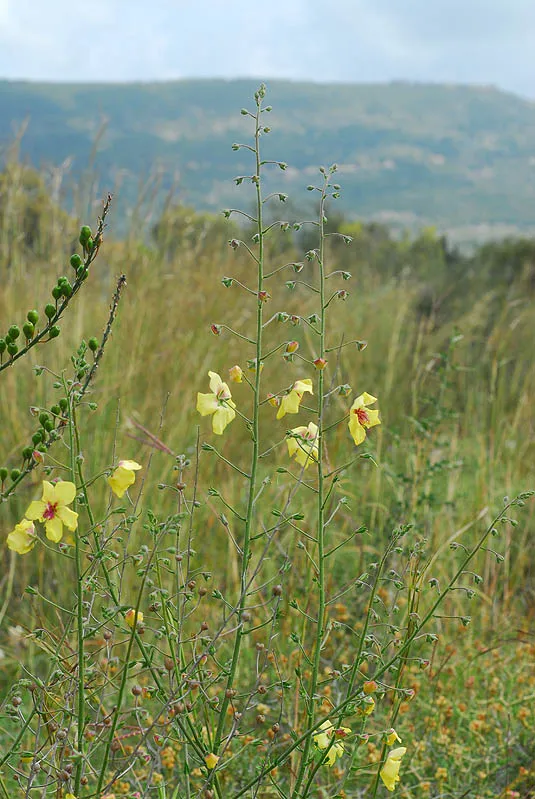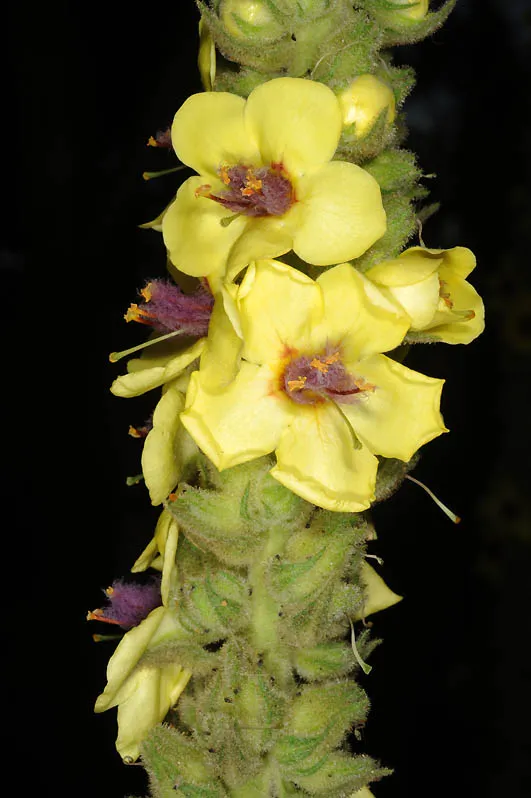Pale Weasel's-snout
Hueblia calycina
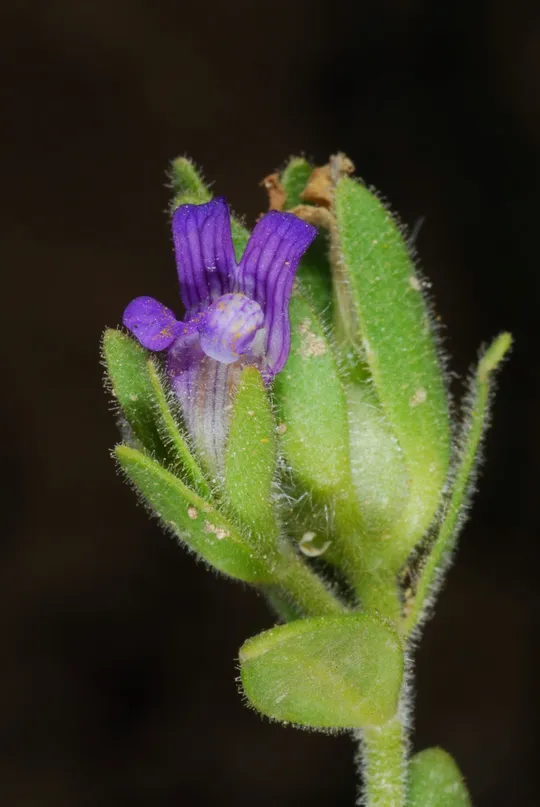
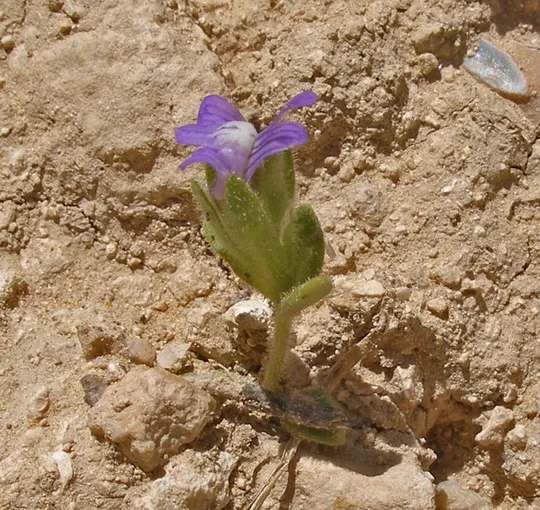
Hueblia calycina was collected
only twice in the Judean Mountains. In 1940, Michael Zohary found it in Sheikh
Inbar on Mount Scopus and the specimen is documented in the Herbarium. In April
2007 Oz Golan, Shir Vered and their friends found it at Aristoblih on Mount
Hebron. Three specimens were found in small traditionally cultivated agricultural
fields on marly rendzina soil. Currently, there is only one H. calycina site, although there may actually be three sites.
Marly rendzina soil in fallow fields, traditionally cultivated
agricultural fields and transition zone Sarcopoterium spinosum scrubland.
The plant grows with carpets of other annuals, particularly with Legousia,
Anthemis and Vicia. In Southern Sinai – Hueblia calycina
grows on weathered red granite slopes in semi-desert.
The genus Hueblia was originally part of the genus
Chaenorhinum that is close to the Linaria and Kickxia
genera. The genus Chaenorhinum has a characteristic fruit that opens
with pores or tears/breaks irregularly. Linaria species have a fruit
that opens by 4-6 valves and the Kickxia species have a short calyx and
a very small fruit. The genus Chaenorhinum has about 20 species found mainly
in Europe. H.
calycina is unique compared to other Chaenorhinum species
in its flowers that are borne on short pedicels (the flowers are almost sessile)
and in its truncated-scarred seeds. The other species have long flower pedicels
and unscarred ovoid-elliptical seeds. Consequently, it was separated into the genus,
Hueblia. Today H.
calycina is the only species in this genus. A closely related
species endemic to Turkey, Chaenorhinum huber-morathii is also
characterized by almost sessile flowers, but differs from H. calycina by its longer
spur, 9-12 mm (Davis, 1978). For some reason, this species was not transferred
to the genus Hueblia.
·
Hueblia calycina is an extremely rare plant and is now found in Israel at only one
site in the Judean Mountains region and is extinct from another site where it
once grew. The currently known site was
discovered only in 2007. This situation makes it difficult to diagnose any
trends in the number of sites over time.
·
The number of specimens
observed was very small.
·
H. calycina's
habitat, fallow fields and traditional agricultural areas in montane and transition
zones, is now threatened by the transition to intensively managed agriculture
and by development. The tiny population is subject to demographic risks and to
the threat of random eradication.
·
H. calycina
is not protected in a nature reserve.
·
The species is
widely distributed in Asia. There is insufficient information available on the
plant’s status in countries adjacent to Israel.
Fallow fields at
high altitudes in the eastern Judean Mountains should be surveyed to locate additional
populations, if any, and subsequently recommend a monitoring program. Protected
areas should be established in this special habitat of montane fields in a manner
that will also include other species characteristic of the habitat. Seeds should
be gathered from the Aristoblih population and propagated in the Jerusalem Botanical
Gardens as a refuge and possible source for reintroduction.
Hueblia calycina has a typical Irano-Turanian
distribution, growing from Israel and Jordan and Southern Sinai east through
the Syrian Desert and Iran, the southern Caucasus and on to Central Asia
(Davis, 1978). H. calycina is very rare in our
region and its populations are fragmented.
Hueblia calycina is a small
annual plant of fallow fields and traditionally farmed areas in the eastern
Judean Mountains at high altitudes. The species is extremely rare and its
habitat is very vulnerable.
Current Occupancy Map
| 1000 squre meter pixel | 5000 squre meter pixel | 10000 squre meter pixel | |
|---|---|---|---|
| number of observations | 0 | 0 | 0 |
| in total pixels | 0 | 0 | 0 |
| Family | Scrophulariaceae |
| Classification | On the endangered species list |
| Ecosystem | High Semi Steppe |
| Chorotype | Western Irano-Turanian |
| Conservation Site | Aristoblih in the southern Mount Hebron |
| Rarity |
1
6
6
|
|---|---|
| Vulnerability |
0
1
4
|
| Attractiveness |
0
0
4
|
| Endemism |
0
0
4
|
| Red number |
1
3.7
10
|
| Peripherality | 0 |
| IUCN category | DD EW EX LC CR EN VU NT |
| Threat Definition according to the red book | Vulnerable |
 Based on:
Based on:
